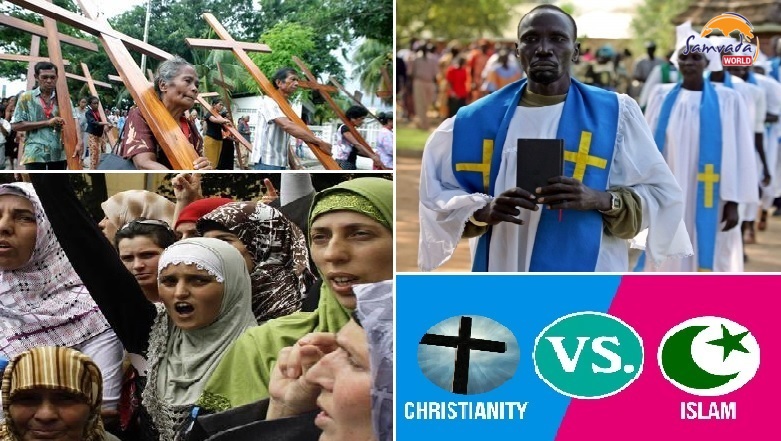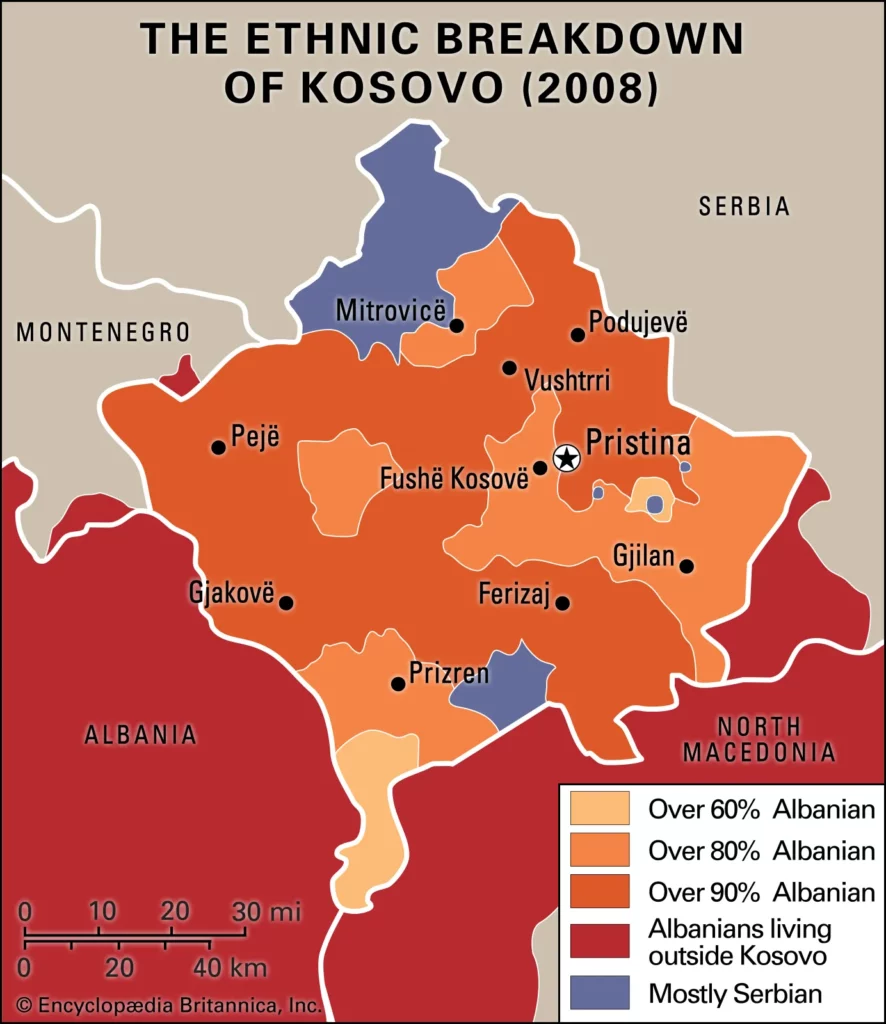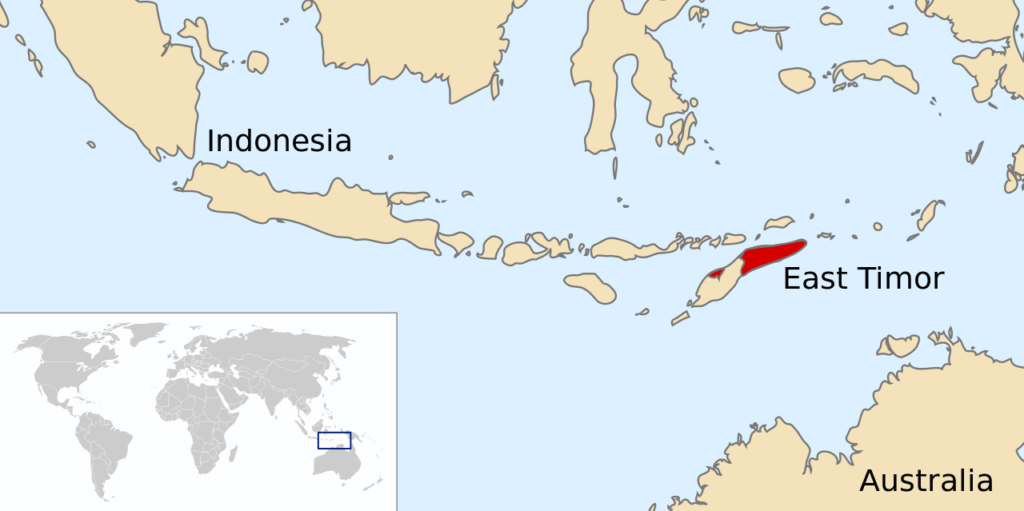Startling revelations after Dr Mohan Bhagwat cited East Timor, South Sudan and Kosovo as case studies for Demographic Imbalance in his Vijayadashami 2022 speech.

In his annual Vijayadashami speech at RSS Headquarters (Nagpur), Dr Mohan Bhagawat said that there should be a comprehensive population control policy, which should apply to all equally. Once it is put in motion, no one should get any concessions. He said that serious consequences were suffered when there was a population imbalance in Bharat which had occurred several years ago. Not only did Bharat suffer such a calamity, but other countries have also succumbed to such suffering.
In the 21st century, countries such as East Timor, South Sudan and Kosovo have been divided due to the population imbalance. This has been caused by birth rate, conversion by force and allurement, and infiltration from across the border. It would be in any country’s national interest to ensure that these issues are not avoided. While this article discusses on population explosion in an imbalanced way, it is pertinent to note several conclusions of the UN report[1] covered in areas such as changes in land and sea use, direct exploitation of organisms, climate change, pollution etc. The UN Report warns that around 1 million animal and plant species are now threatened with extinction[2], many within decades, more than ever before in human history. Population explosion itself is an important subject to debate, however, religion-based population imbalance is a subject that cannot be ignored. Let us look at the case studies of East Timor, South Sudan and Kosovo:
East Timor
Earlier, East Timor was part of Indonesia. During the colonial era, East Timor was captured by Portugal and later on by Japan. However, in 1975, it merged again in Indonesia, due to Suharto who was the Dictator of Indonesia at that time. Indonesia has the highest number of Muslims in the world. Before Suharto’s rise, he acted as a secular Muslim. At that time there were only twenty per cent Christians. As Suharto was very corrupt, poverty and other problems spread across the country, which influenced the Christian missionaries to take benefit of the same and begin mass religious conversions. Christianity which was only about 20% in the year 1975, peaked at 95% in 1990. Pope visited East Timor in 1989 and was overjoyed.
The Nobel peace prize was given to Bishop Carlos who had credit for the mass conversions in East Timor. This led to several conflicts between the Indonesian Muslim groups and East Timor Catholic groups. East Timor Catholics demanded a separate country for themselves which led to huge violence in the year 1999. UN had taken control over East Timor in the same year. Thereafter under the pressure of East Timor people and the international community, Indonesia agreed on a referendum. As per the said referendum, 78% of the people voted for a separate country and Indonesia was divided into 2 parts and East Timor became a separate country.
South Sudan
South Sudan is a country with more than 60 different ethnic groups. However, Sudan was an Islamic African country with over 90% Muslims. The southern part of Sudan contained large parcels of oil fields. In 1990, 5% of Christians commenced mass religious conversion practices and by 2011 there were about 61% of Christians in South Sudan. Civil war erupted between the Sudanese Muslims and Sudanese Christians which continued for over 22 years. The war was predominantly between Muslims of north Sudan and Christians and other traditional religions of South Sudan.

Whereas the inhabitants of South Sudan who were of different ethnic groups formed the Sudan revolutionary party which faced the biggest civil war in history. Millions of indigenous people were killed and displaced. In the observations made by United Nations Security Council, a referendum was finalized wherein the people of South Sudan chose a separate country in the year 2011. Sudan was divided into 2 parts and South Sudan became a new country.
Kosovo
Kosovo was part of Serbia, Europe. There were two major ethnic communities in Kosovo, i.e., Serbs and Albanians. Serbs were mostly orthodox Christians while Albanians were Muslims. Tensions between Albanians and Serbs in Kosovo continued for over a century. The high birth rate of Albanians led them to have a higher population in Kosovo. In 1921, they were about 65%, which grew to 88% in 2000. Kosovo Albanians raised the issue of human rights violations and ethical cleansing and started a civil war. It started with a student protest and the formation of the Kosovo Liberation Army in the years 1998-99, followed by sporadic violence which was an anti-Serb riot that broke out periodically between the years 1998 to 2004 in numerous cities and towns in the Kosovo region. In the year 1999, over 2 lakh Serbs had to flee from Kosovo when a war happened between the Serbia’s Federal Republic of Yugoslavia and the Kosovo Liberation Army.

United Nations and NATO forces took over Kosovo and formed a provisional government in the year 2001 where a separate country named Kosovo was formed. Again in the year 2004, anti-Serb riots claimed several lives and displacement of over 4,000 Serbs and other minorities. In February 2008, Kosovo declared its independence from Serbia. As of 2007, the Albanians were 92% and the Serbs were only 5%. Serbia was divided into 2 parts and later in 2006, one more referendum happened in the Montenegro part of Serbia and Serbia was further divided. As of date, in Kosovo, 95.6% of the population is Muslims, 2.2% are Roman Catholics, and 1.4% are Serbian orthodox as per Government data[3].
The commonalities seen from these three case studies are:
Step 1: Demography change in one area.
Step 2: The majority community of that area complains of human rights violations, discrimination and phobia.
Step 3: Protests
Step 4: The state controls the Protests
Step 5: Protests turn into civil war/s
Step 6: International Pressure
Step 7: Referendum for a separate state
Step 8: Separate State.
Aren’t most of these steps similar to what happened in Kashmir in the 1990s? History gives examples of the destruction of a country’s cultural milieu by differential growth of the population aimed at claiming political separation and superiority as seen in Lebanon. The same phenomenon appears to be happening in parts of India, where Muslims have been able to prevail upon the ruling parties through group voting strength, to carve out Muslim majority districts: Malappuram in Kerala, Mewat in Gurugram and Malerkotla in Punjab.
Writing in Jamaat-e-Islami weekly titled ‘Radiance’ where Dr Omar Khalidi stated “We need Muslim districts for three reasons. First, concentrated areas provide security; second, to provide an environment that is conducive to our cultural independence; third, to provide a political base through which our people can be elected… at present, our numbers don’t add up to elect adequate legislators. Hyderabad and Rangareddy in Andhra Pradesh and Gulbarga (Karnataka) and certain Talukas could be merged to create a Deccan province (with Muslim majority)’.
In conclusion, Dr Mohan Bhagawat explained that the cause of the population explosion on managing resources and ensuring that the youth demanding jobs from the government looked towards society to develop an aptitude for entrepreneurship and self-employment. Dr Mohan Bhagawat ji also said that with efforts, the people make a country grand; they also carry on their family line and that of society. To beget, preserve and protect a populace apart from being relevant for national identity and security, is a subject that touches some other facets also.
(Views expressed are author’s own)
References:
[1] https://unstats.un.org/sdgs/report/2019/The-Sustainable-Development-Goals-Report-2019.pdf
[2] https://www.nationalgeographic.com/environment/article/ipbes-un-biodiversity-report-warns-one-million-species-at-risk
[3] https://www.state.gov/reports/2021-report-on-international-religious-freedom/kosovo/#:~:text=The%20majority%20of%20Kosovo%20Albanians,some%20Roma%20are%20Christian%20Orthodox


This article is an eye opener to Indian Hindus.